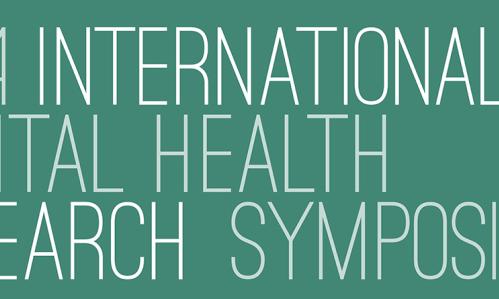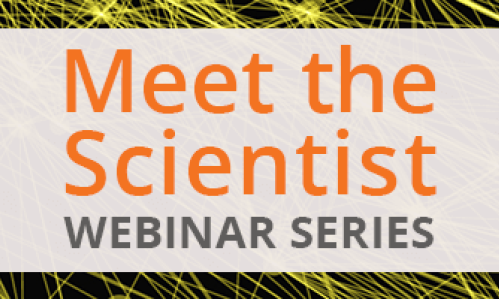Frequently Asked Questions about Anxiety
Frequently Asked Questions about Anxiety
Occasional anxiety is a normal part of life. You might feel anxious when faced with a problem at work, before taking a test, or making an important decision. But anxiety disorders involve more than temporary worry or fear. For a person with an anxiety disorder, the anxiety does not go away and can get worse over time. The feelings can interfere with daily activities such as job performance, school work, and relationships. There are several different types of anxiety disorders. Examples include generalized anxiety disorder, panic disorder, and social anxiety disorder.
* Source: National Institute of Mental Health
Impactful Anxiety Research Discoveries by Foundation Grantees:
- Treatment with Immune-Regulating Gut Bacteria May Boost Immune System Against Stress
- Targeted Medication Can Improve Effect of Psychotherapy in Anxiety Disorders
- The Development of Optogenetics to Help Identify the Mechanisms that Give Rise Anxiety and Other Brain-Related Disorders
- New Clues for Medications to Prevent Disorders Caused by Early-Life Stress
For our most recent research summaries, click here.
- Generalized Anxiety Disorder
- Obsessive-Compulsive Disorder (OCD)
- Panic Disorder
- Post-Traumatic Stress Disorder (PTSD)
- Social Phobia (or Social Anxiety Disorder)
Primary care physicians and psychiatrists diagnose someone as having an anxiety disorder if symptoms occur for six months on more days than not, and significantly interfere with the person’s ability to function at home, work or school.
Doctors perform physical and psychological evaluations to rule out other causes for the symptoms of anxiety. Cardiovascular disease, thyroid problems, menopause, substance abuse and/or drug side effects, such as from steroids, may cause symptoms similar to those of an anxiety disorder.
Researchers are finding that genetic and environmental factors are risk factors for anxiety disorders. Specific factors include:
- Shyness, or behavioral inhibition, in childhood
- Being female
- Having few economic resources
- Being divorced or widowed
- Exposure to stressful life events in childhood and adulthood
- Anxiety disorders in close biological relatives
- Parental history of mental disorders
- Elevated afternoon cortisol levels in the saliva (specifically for social anxiety disorder)
* Source: National Institute of Mental Health
Anxiety disorders are generally treated with psychotherapy, medication, or both.
- Psychotherapy
- Cognitive Behavioral Therapy (CBT)
- Self-Help or Support Groups
- Stress-Management Techniques
- Antidepressants
- Anti-Anxiety Medications
- Beta-Blockers
For more information regarding treatments for Anxiety, visit:
- “Love Hormone” Oxytocin Shows Promise in Treating Anxiety Disorders
- New Research Further Decodes Brain Circuitry to Improve Anxiety, Depression Treatments
* Source: National Institute of Mental Health
Advice to Parents on Diagnosing and Treating Anxiety Disorders in Young People - Dr. Francis Lee of Weill Cornell Medical College and NewYork-Presbyterian Hospital focuses on leveraging molecular neuroscience tools to improve our understanding of anxiety disorders. His current research has centered on factors that influence the plasticity of the brain – its ability to change in response to experiences, both good and bad. Dr. Lee additionally sees patients with a focus on anxiety disorders.
According to Daniel S. Pine, M.D., a member of the Foundation’s Scientific Council, and chief of the Section on Development and Affective Neuroscience in the National Institute of Mental Health Intramural Research Program:
There are generally two types of treatments that seem to be equally effective: cognitive behavioral therapy (CBT) and selective serotonin reuptake inhibitor (SSRI) medications. The best study that compared them directly in kids found one is no better than the other, and that combining the two works better than using one or the other alone. Cognitive behavioral therapy is a really wonderful treatment, but the therapist has to have some experience delivering it. Specific techniques need to be followed. There are not that many therapists in the United States who are readily available to apply those methods.
Generalized Anxiety Disorder (GAD) is an exaggerated anxiety and tension that persists for months on end and affects approximately 6.8 million Americans or about 3.1 percent of the population. GAD causes people to anticipate catastrophe and worry excessively about many things, from overarching concerns such as health, money or work to more routine concerns such as car repairs or appointments. GAD affects twice as many women as men, and the anxiety becomes so severe, normal life and relationships become impaired.
Worries can be accompanied by physical symptoms, such as fatigue, headaches, muscle tension and aches, difficulty swallowing, trembling, twitching, irritability, sweating, and hot flashes. The disorder usually develops gradually and may begin any time during life, although the risk is highest between childhood and middle age. It is diagnosed when someone spends at least six months worrying excessively without a specific focus of the fear and an inability to control the anxiety.
Obsessive-Compulsive Disorder (OCD) is an anxiety disorder marked by fearful ideas and ritualistic behaviors. Obsessions are repetitive thoughts or impulses, such as a fear of getting infected from someone else’s germs or hurting a loved one. These obsessions create excessive anxiety and stress for the person affected. Although the thoughts are intrusive and unwanted, the person with OCD cannot stop them. Compulsions are repetitive behaviors people with OCD feel compelled to perform in an attempt to control or decrease the anxiety created by the obsessions. This can include things like constantly checking that an oven is off to prevent a fire, or frequent cleaning or hand-washing to avoid contamination.
Panic disorder is characterized by unexpected and repeated episodes of intense fear accompanied by physical symptoms that may include chest pain, heart palpitations, shortness of breath, dizziness or abdominal distress. It is characterized by sudden attacks of terror, usually accompanied by a pounding heart, sweatiness, weakness, faintness or dizziness. During these attacks, people with panic disorder may flush or feel chilled; their hands may tingle or feel numb; and they may experience nausea, chest pain or smothering sensations. Panic attacks usually produce a sense of unreality, a fear of impending doom or a fear of losing control. Panic attacks can occur at any time, even during sleep.
Learn more about Panic Disorder:
Post-Traumatic Stress Disorder (PTSD) is an anxiety disorder that can develop after exposure to a terrifying event or ordeal in which grave physical harm occurred or was threatened. After traumatic events, such as death, an earthquake, war, car accidents, floods or fires, it is not uncommon for people to experience feelings of heightened fear, worry, sadness or anger. If the emotions persist, however, or become severe, or the person gets triggered into reliving the event in their daily life, this can affect the person’s ability to function and may be a sign of PTSD.
Social Phobia, or Social Anxiety Disorder, is an anxiety disorder characterized by overwhelming anxiety and excessive self-consciousness in everyday social situations. Social phobia can be limited to only one type of situation, such as a fear of speaking in formal or informal situations, or eating or drinking in front of others. In its most severe form, social phobia may be so broad that a person experiences symptoms almost anytime they are around other people.
Read more about Social Phobia:
Stress is a normal physical response to events that make one feel threatened or that upset one’s balance in some way. When the body senses danger—real or imagined—the body's defenses kick into high gear in a rapid, automatic process known as the ‘fight-or-flight’ reaction, or the stress response. The nervous system responds by releasing a flood of stress hormones, including adrenaline and cortisol, that rouse the body for emergency action.
Learn more about stress:
Stress during development has often been regarded as a potentially disruptive force, capable of inducing disease states if overly prolonged or exceedingly intense. It can also, however, favor resiliency and adaptive processing that are crucial to navigating a human life. Countless studies have indicated that severe neglect during infancy, both in humans and in laboratory animals, results in long-term abnormal development of biological systems involved in the regulation of emotions, but the response to stress is also a key driver to individual development. The biological system responsible for physical reactions to a stressor not only coordinates immediate responses to external challenges but also functions as a tool that enables the characterization of an environment as favorable or threatening. Thus the stress response system promotes long-term adaptive processes that prepare the individual to cope with specific external challenges.
- Cognitive symptoms include memory problems; inability to concentrate; poor judgment; anxious or racing thoughts and constant worrying
- Emotional symptoms include moodiness; irritability or short temper; agitation; inability to relax; a feeling of overwhelm; a sense of loneliness and isolation
- Physical symptoms include aches and pains; diarrhea or constipation; nausea; dizziness; chest pain; rapid heartbeat
- Behavioral symptoms include eating more or less; sleeping too much or too little; isolating yourself from others; procrastinating or neglecting responsibilities; using alcohol, cigarettes, or drugs to relax; engaging in nervous habits (e.g., nail biting, pacing)
Youth of all ages, but especially younger children, may find it difficult to recognize and verbalize when they are experiencing stress. For children, stress can manifest itself through changes in behavior. Common changes can include irritability, withdrawal from formerly pleasurable activities, routine expression of worries, excessive complaints about school, frequent crying, display of surprising fearful reactions, separation anxiety, sleeping too much or too little, or eating too much or too little. With teens, while spending more time with and confiding in peers is a normal part of growing up, significantly avoiding parents, abandoning long-time friendships for a new set of peers, or expressing excessive hostility toward family members may indicate that the teen is experiencing significant stress.
In their 20 years of treating and studying trauma survivors, Drs. Dennis Charney and Steven Southwick have identified ten common practices in people who have shown resilience in the face of extreme stress.
- Maintaining an optimistic but realistic outlook
- Facing fear (ability to confront one’s fears)
- Reliance upon own inner, moral compass
- Turning to religious or spiritual practices
- Seeking and accepting social support
- Imitation of sturdy role models
- Staying physically fit
- Staying mentally sharp
- Cognitive and emotional flexibility (finding a way to accept that which cannot be changed)
- Looking for meaning and opportunity in the midst of adversity
Check out this webinar featuring Dr. Charney: Resilience: The Science of Mastering Life's Greatest Challenges
In the physical sciences, materials and objects are termed resilient if they resume their original shape upon being bent or stretched. In people, resilience refers to the ability to ‘bounce back’ after encountering difficulty.
Check out this webinar featuring Dr. Charney: Resilience: The Science of Mastering Life's Greatest Challenges
Find answers to more questions about Anxiety and related disorders in our Ask the Expert section.
View our Meet the Scientist Webinar on Anxiety: Early-Life Stress: Long-Lasting Impact on Brain Circuitry and Behavior
Donate Now
Donations are welcome














